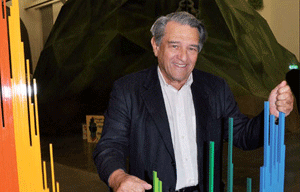Input welcome in space plan
Updated: 2011-11-19 08:22
By Xin Dingding (China Daily)
|
|||||||||
 |
|
A box with biological experiment equipment from the Shenzhou VIII spacecraft arrives in Beijing on Friday. [Photo/Agencies] |
BEIJING - China's space station plan welcomes outside involvement, a senior space official said on Friday.
Wang Zhaoyao, vice-director of China's manned space engineering office, denied that China's plans to build a space station around 2020 would exclude other nations - the International Space Station is expected to serve until 2020, and the Chinese craft might be the only orbital outpost operating after.
"We emphasize independent development, but never said we want to develop in isolation," he said at a news briefing about the nation's space dockings.
"The development and operation of China's space station are open to foreign colleagues and experts in the field on the basis of mutual respect, mutual benefit, transparency and openness," he said.
Already, China has had limited but fruitful space cooperation with Russia, Germany, France and other nations, he added.
He brushed off speculation that China's manned space program has military functions.
None of the eight Shenzhou missions have had direct military applications, he said.
"We all know that space-related technological developments can be used in civilian and military sectors," he said. A communications satellite can be used for TV broadcasting and military communication, for example.
"The difference is what you use it for," he said.
China has been steadily progressing toward its goal of building a 60-ton space station around 2020, which will be much smaller than the 390-ton International Space Station.
Since 1999, China has launched five unmanned and three manned Shenzhou spacecraft.
With the recovery of Shenzhou VIII on Thursday, which docked twice with the unmanned Tiangong-1 space module, he said, China has mastered the three basic technologies of manned space flight: transporting astronauts to space and back, extra-vehicular activity, and spacecraft rendezvous and docking.
But there is much more to learn before building a space station, including techniques of water and oxygen recovery, large-scale solar energy production, thermal control, large-scale assembly and long-term operation, he said.
A space laboratory will be built by 2016 to test these technologies, he said.
Next year, the unmanned Tiangong-1 space module, now in orbit 370 km above Earth, will dock with two more Shenzhou craft, at least one of them manned, to help hone docking skills.
"Whether Shenzhou IX will be manned or not will be decided by the end of this year when the evaluation of Shenzhou VIII is completed," he said.
China's first female astronaut is expected to go into space next year in one of the two vehicles.











